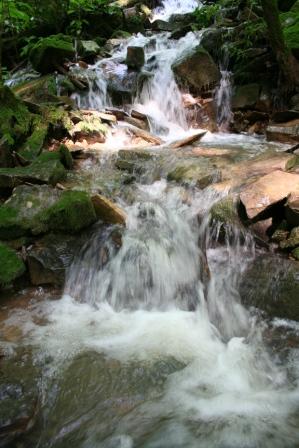The Ugandan government is attempting to give 17,500 acres of rainforest the axe. Literally. They intend to revoke the protected status of a portion of the Mabira Forest and give the land to a sugar cane company for clearing. Only about 15% of Uganda's land is still forested and approximately 2% of those forests are lost each year to clearing for farming and cattle. The forests mean life to the locals, providing firewood, charcoal, herbal medicine, edible fruits and timber. A recent study has shown that nine species of wildlife found only in the Mabira Forest, including a shrub used to treat malaria, would be in danger of extinction.
The rainforest is already disappearing at an alarming rate without government's actually offering up protected areas for deforestation. If only 15% of the entire country is forested, there shouldn't there be plenty of places that are already cleared and suitable for sugar cane?
Sunday, May 13, 2007
Saturday, May 12, 2007
Green Rebuilding Efforts
A rebuilding project in New Orleans' Lower Ninth Ward is focusing on green techniques. Global Green USA is the environmental group building the project, which is being largely funded by the Home Depot Foundation. The project consists of five shotgun style homes and an 18-unit housing complex that will utilize 40% less energy than traditional buildings. Project sponsors and supporters hope that this can be seen as a template for other rebuilding efforts.
Tuesday, May 01, 2007
Living Rivers
You can't fight Mother Nature. For years, people have tried to make nature conform to their needs and desires; often times with disasterous consequences. Nowhere is this mindset more evident than in rivers and streams. People have moved, straightened, widened, deepened and bound waterways for a multitude of reasons, but to prevent flooding has always been near the top of the list. They seem to forget that floodplains were aptly named because rivers need to flood.
Rivers are a living, dynamic system to which flooding is like breath. The rivers may not take a breath as often as we humans do, but without it they too will certainly choke. Flooding releases sediment to the floodplains that would otherwise fill river beds. Flooding also provides nutrients to floodplain soils and replenishes wetlands. A healthy river is considered to be in a state of dynamic stability. It lives in a fairly definable corridor, within which meanders migrate, cutoff and reform as water and sediment are carried downstream.
I wish more people appreciated the natural beauty of a river. From headwaters to outlet, it maintains a delicate balance of flow and sediment and nourishes so many adjacent habitats. The studies of river hydraulics and geomorphology have allowed us to begin to understand the complex interactions of this system. Great researchers in this field, such as Luna B. Leopold and Dave Rosgen, have brought us closer to the goal of living with rivers instead of against them.
Rivers are a living, dynamic system to which flooding is like breath. The rivers may not take a breath as often as we humans do, but without it they too will certainly choke. Flooding releases sediment to the floodplains that would otherwise fill river beds. Flooding also provides nutrients to floodplain soils and replenishes wetlands. A healthy river is considered to be in a state of dynamic stability. It lives in a fairly definable corridor, within which meanders migrate, cutoff and reform as water and sediment are carried downstream.
I wish more people appreciated the natural beauty of a river. From headwaters to outlet, it maintains a delicate balance of flow and sediment and nourishes so many adjacent habitats. The studies of river hydraulics and geomorphology have allowed us to begin to understand the complex interactions of this system. Great researchers in this field, such as Luna B. Leopold and Dave Rosgen, have brought us closer to the goal of living with rivers instead of against them.

Subscribe to:
Posts (Atom)
